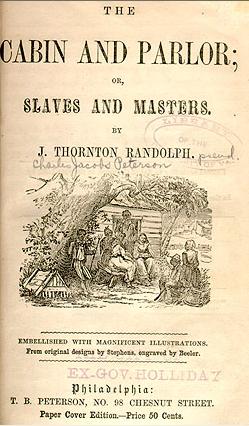Plot summary
The story begins with the sudden death of Mr. Courtenay, a wealthy but kindly Virginia landowner who, not having had time to pay off his debts, leaves his family facing destitution.
In an effort to avoid bankruptcy, the family sells their slaves, among whom is the kindly Uncle Peter, who takes a liking to Courtenay's daughter, Isabel, and vows to help the family in any way he can in thanks for the kindness they showed him. The money from the sales is nominal, and Isabel and her brother Horace must find jobs to pay the remaining bills and support their ailing mother.
Isabel finds work as a schoolteacher, and Horace heads to an unidentified city in the North (implied as Philadelphia), where he becomes a "Northern slave" (i.e. clerk) to the malevolent Mr. Sharpe, a ruthless capitalist who works Horace mercilessly.
As the Courtenays continue to struggle, Isabel finds comfort in a young slaveowner named Walworth, the son of an old Virginia family, who travels back and forth between the North and South. When Horace dies of exhaustion in the North, Walworth comforts him in his final hours, and delivers his final requests to his sister.
Whilst travelling together, Walworth and Isabel are caught in the midst of an anti-black riot, from which Walworth saves Isabel from harm. Isabel begins to have romantic feelings for Walworth, and they eventually marry. The marriage, by a twist of fate, allows Isabel to reclaim her wealth and property—including her slaves—and she is finally reinstated at Courtenay Hall.
This page is based on this
Wikipedia article Text is available under the
CC BY-SA 4.0 license; additional terms may apply.
Images, videos and audio are available under their respective licenses.
